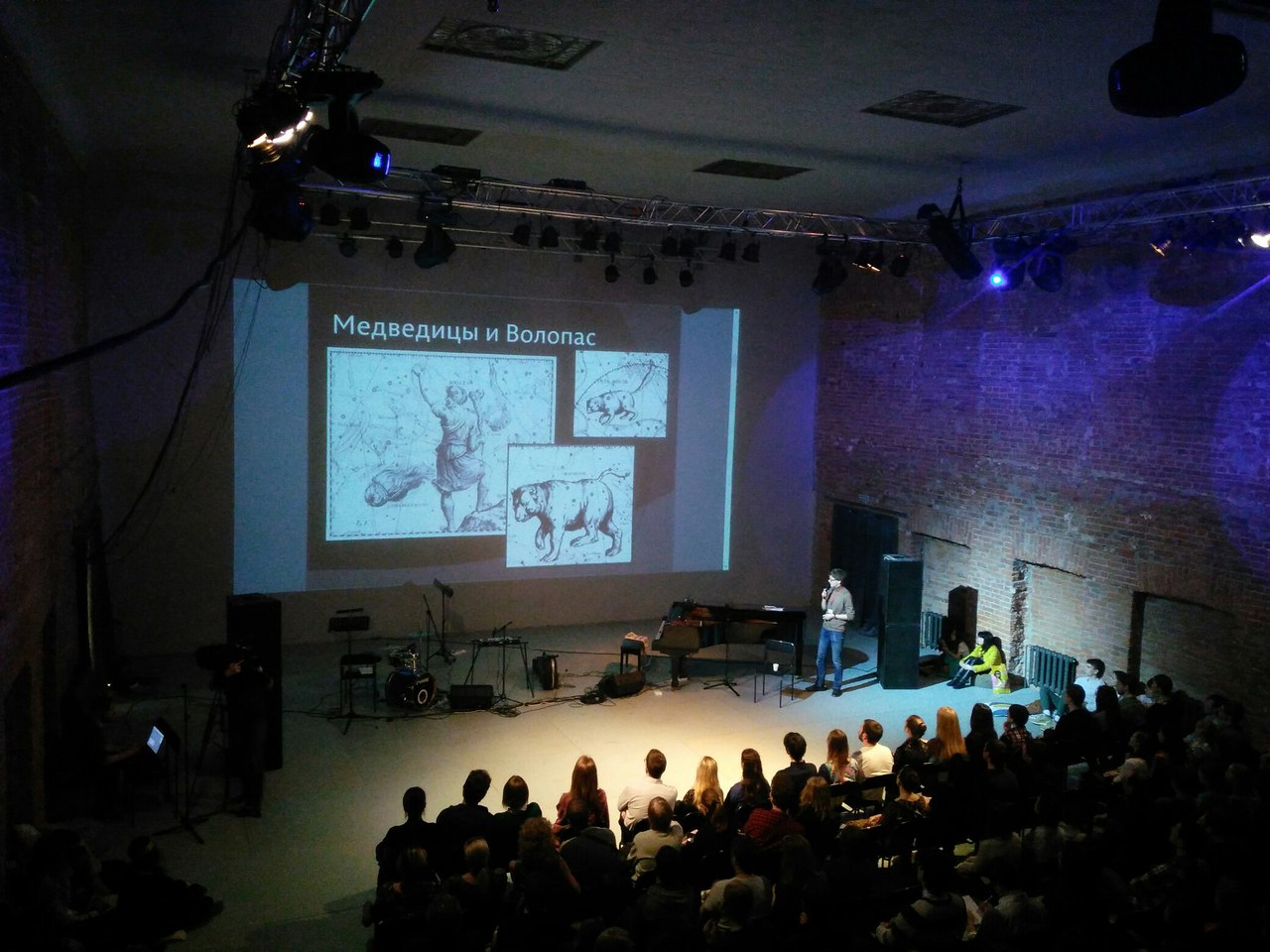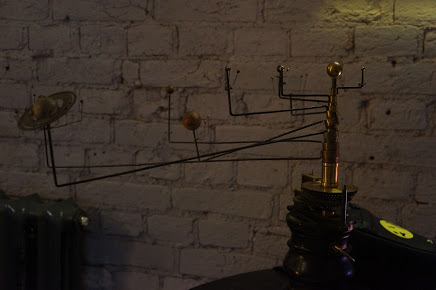
Yuri’s Night 2017 – the annual international event to celebrate the first human space flight – took place on April 12 at the private philharmonic hall “Triumph”. As part of this event Kirill Tsiberkin (PhD in Physico-mathematical sciences, professor of the department of Theoretical Physics of Perm State University) gave a lecture on constellations: how many constellations are known to date (88), how many of them were discovered in ancient times (46) and how they are connected with the Greek mythology. For example, a well-know constellation called Ursa Major (the Great Bear), according to one of several interpretations of the myth, is an embodiment of nymph Callisto, a lover of Zeus who turned her into the Great Bear in order to avoid the wrath of Hera, his wife. Another interpretation claims that Hera who turned Callisto into the Great Bear to make her son kill her during a hunt. Ursa Minor (the Little Bear) is the nymph’s dog, and the constellation Boötes is a son of Zeus and Callisto, Arcas.

The constellations and myths connected with them are famous for the “Almagest” (c. 140), a voluminous treatise of Claudius Ptolemy (c. AD 100 – c. 170), who worked in Alexandria, Egypt. Ptolemy’s writings are the critical source on ancient Greek and Babylonian astronomy and formulated the Geocentric model of the universe (also known as the Ptolemian system, geocentrism). The “Almagest” also includes a star catalog, the list of 46 constellations that wasn’t full enough, since Ptolemy gave descriptions only to the stars he could see from Alexandria. The Ptolemian system had been commonly adopted by the Western and Arab worlds, until the Heliocentric model (also known as heliocentrism) was formulated by Nicolaus Copernicus (c. 1473 – c. 1543).
The Campus Martius team together with the Perm University History Museum organised the “space child-care club”, which was opened from 7 p.m. Children there made and decorated their own telescopes, which would help them to observe the constellations at all times of day and year and match with the myths behind them. During the master class, children were told about the ancient Greek heroes, which could be seen now in the sky as constellations. Together we discussed why the ancient Greeks came up with the idea of constellations and attributed them myths.



During the “space child-care club” children and their parents were given the opportunity to take a look at the early XX century model of the universe from the Perm University History Museum. The planets in the solar system are also connected with different Greek and Roman myths. The Romans used to believe that every celestial body was an embodiment of a particular God. For example, the Sun was the embodiment of Helios, Mercury (Hermes in Greek mythology) was the patron God of financial gain, commerce and travelers, Venus (Aphrodite in Greek mythology) was the patron Goodness of love, beauty and women, the Earth was the embodiment of Terra (also known as Gaia) and Mars (Ares in Greek mythology) was the patron God of war and soldiers.


